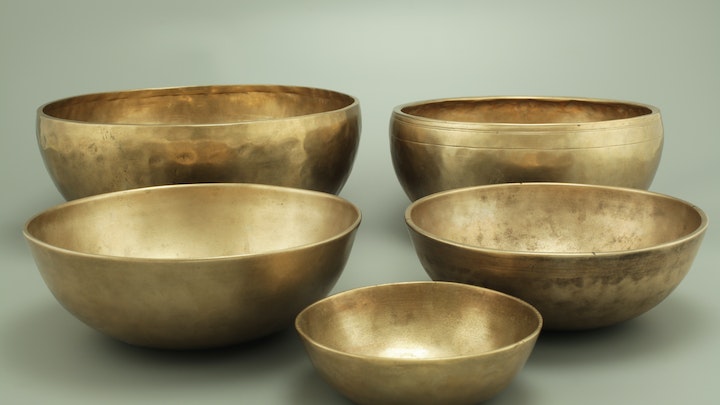Brass is conductive or conducts electricity. It is an alloy consisting of two metals – copper and zinc. Ideally, it consists of 66% copper and 34% zinc but there is always room for variation.
The higher the presence of copper in brass, the better the conductivity, and vice versa. This variation is also why the alloy sometimes features different appearances (yellow to red or silver).
In this guide, I will be explaining the essential properties of brass, how it conducts electricity and its real-life applications.
You will also learn about the electrical and thermal conductivity of this alloy.
Structure and Properties of Brass
- Brass has an FCC (Face Centered Cubic) structure and a metallic bond.
- The alloy is very malleable or can take up any shape.
- Its melting point depends on the concentration of both metals. Nevertheless, it is usually about 900°C or more.
- The boiling point of brass is about 1110°C
- Brass is not ferromagnetic and is easy to recycle.
- Brass has a natural sparkling gold appearance. This color may change to red or silver depending on the concentration of metals present in the alloy.
- The alloy gives room for little friction and can withstand corrosion.
Why is Brass Conductive?

Brass is made up of two metals – copper and zinc. These metals contain very mobile electrons and conduct electricity and heat easily.
However, the mobility of these electrons depends on the concentration of zinc. In other words, more zinc means less conductivity and vice versa.
Electricity Conductivity and Resistivity of Brass
The electrical conductivity of a material is the extent to which such material allows electricity to flow through them. This is stamped at 15.9 x 10⁶ siemens per meter (Sm-1) for brass.
The major obstacle to the conductivity of brass is resistivity. The electrical resistivity of brass is usually about 0.6 to 0.9 x 10⁻⁷ Ωm at 20℃ with that of zinc being 16.6 x 10⁶.
Despite these obstacles, brass still conducts electricity.
Factors Affecting the Electrical Conductivity and Resistivity of Brass
Factors that affect the conductivity or resistivity of brass of a material include:
1. Temperature
Temperature affects the conductivity and resistivity ability of most metals. This is concept is known as the temperature coefficient.
An increase in temperature increases resistivity in brass, hence, reducing conductivity and vice versa.
2. Mechanical stress
Mechanical stress influences dislocations within brass. Increasing mechanical stress only means reducing electricity conductivity and increasing resistivity.
However, if brass restores its cubic structure, the same happens to its resistivity.
3. Alloying atoms
Brass is an alloy and naturally, the resistivity of the alloy increases with the addition of new or different alloy atoms. This occurs because:
- The difference in the sizes of atoms gives room for a change of lattice parameters which results in the scattering of charge carriers (electrons).
- The valence difference between the base metal’s atoms and that of the alloying metal causes a local charge difference that supports electron scattering.
- When there is a difference in the electron concentration of the base metal and that of alloying metal, changes occur in the position of Fermi energy.
4. Age hardening
The electrical resistivity of the brass increases with age hardening. This is because it disturbs the crystal lattice of most alloys and restricts the free electrons to fewer movements.
Uses of Brass

Brass is less prone to friction and corrosion. This is primarily why it has a variety of real-life applications:
- Brass naturally has acoustic characteristics suitable for the design of musical devices such as trumpets and French horns.
- Wires made out of brass conduct electricity well and can resist corrosion. The zinc element in brass also makes them durable and ideal for electrical connectors.
- Some electric plugs and sockets have traces of brass.
Does Brass Conduct Heat?
Brass is not only a good conductor of electricity; it conducts heat too. It has a thermal conductivity of 146.87 W/m.K that may increase or decrease with a temperature change.
FAQs
Does brass conduct better than steel?
Yes, brass is a better conductor than steel.
This is because the alloy contains copper which is the second-most conductive metal on earth.
What are the disadvantages of brass?
The major disadvantage of brass is that it demands constant maintenance.
Maintenance prevents it from displaying a blackish tarnish when exposed to air.
How long will brass last?
Brass has amazing endurance and can last more than 1,000 years.
This also depends on how well you maintain the brass device.
Conclusion
Brass is a combination of copper and zinc. These are metals, hence, brass is naturally conductive to electricity and heat.
However, to know how conductive this alloy is, you must be sure of the concentration of the two (can be more) metals present in it.
When the concentration of zinc significantly increases, brass becomes less conductive and assumes a silver appearance. This is because it sacrifices conductivity for strength and flexibility.
On the other hand, when the concentration of copper is more, electrical conductivity increases. Its color becomes a bit reddish.
Lastly, in a case where there are more than 2 metals, conductivity may increase or decrease depending on the characteristic of the new metal(s).
I hope you found this guide helpful. Perhaps you would like to know how iron compares with brass in terms of conductivity, please see if iron is conductive.
Thank you for reading.

